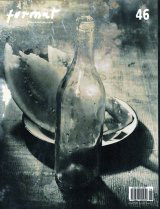Decydujacy moment
A Decisive Moment
Author(s): Henri Cartier-BressonSubject(s): Fine Arts / Performing Arts
Published by: Akademia Sztuk Pięknych im. Eugeniusza Gepperta we Wrocławiu
Summary/Abstract: There is nothing in the world that doesn’t have a decisive moment. Cardinal Retz As child, I was interested in painting. I had a Brownie Box camera, but I only used it to produce vacation souvenirs, until I discovered films by White and Griffith, and photography by Atget. I bought a 9x12 camera, and started my experience as a serious photographer. I myself developed films and I enjoyed working in darkroom. In 1931, when I was twenty two, I went to Africa, and I discovered Leitz technology. I traveled to many countries, but I always wanted to longer stay in one place; I couldn’t become a globetrotter. I learnt to produce photographic reports and newspapers started publishing my pictures. I believed that photo-journalism was the result of cooperation between yes and the mind. I was often astonished by the development of space in front of my eyes, and of multiple changes in space. Of all artistic media, photography is the only medium which captures precise moments. After they were registered, events cannot be retouched. Reporters can only select several pictures from a series. When things disappear from sight, they disappear for ever. Photographers concentrate on facts, just like court reporters. Photographers must be able to communicate with people. When they cannot establish good relations with people they photograph, they cannot work as reporters. Sometimes, only one improper word can destroy atmosphere. There are no established rules to be followed; reporters must always be flexible and ready to change the ways they behave. Themes are to be found everywhere. Photographers should only be ready to register them. They must be honest in their reporting. They cannot merely collect facts; they must select and interpret them. People are willing to be photographed, however, there is always a risk pf failed magic, and artists must be able to protect people from that kind of failure. Photographers contribute to integration of different conditions and proper atmosphere. They use complicated tools, and they have to know how to operate them. Portrait photographers find harmony in the characters of their models. There are simple passport-photos, which are of better quality than many pre-arranged portraits. Different subjects require different artistic forms. Composition is based on necessity. Forms and themes cannot be separated from each other. Cameras are precision tools, and not toys. Cameras are used to produce visual chronicle and they reveal the meaning of the reality. Visual organization of images is connected with spontaneous registration of artistic rhythm.
Journal: Format - Pismo artystyczne
- Issue Year: 46/2005
- Issue No: 01+02
- Page Range: 2-4
- Page Count: 3
- Language: Polish

